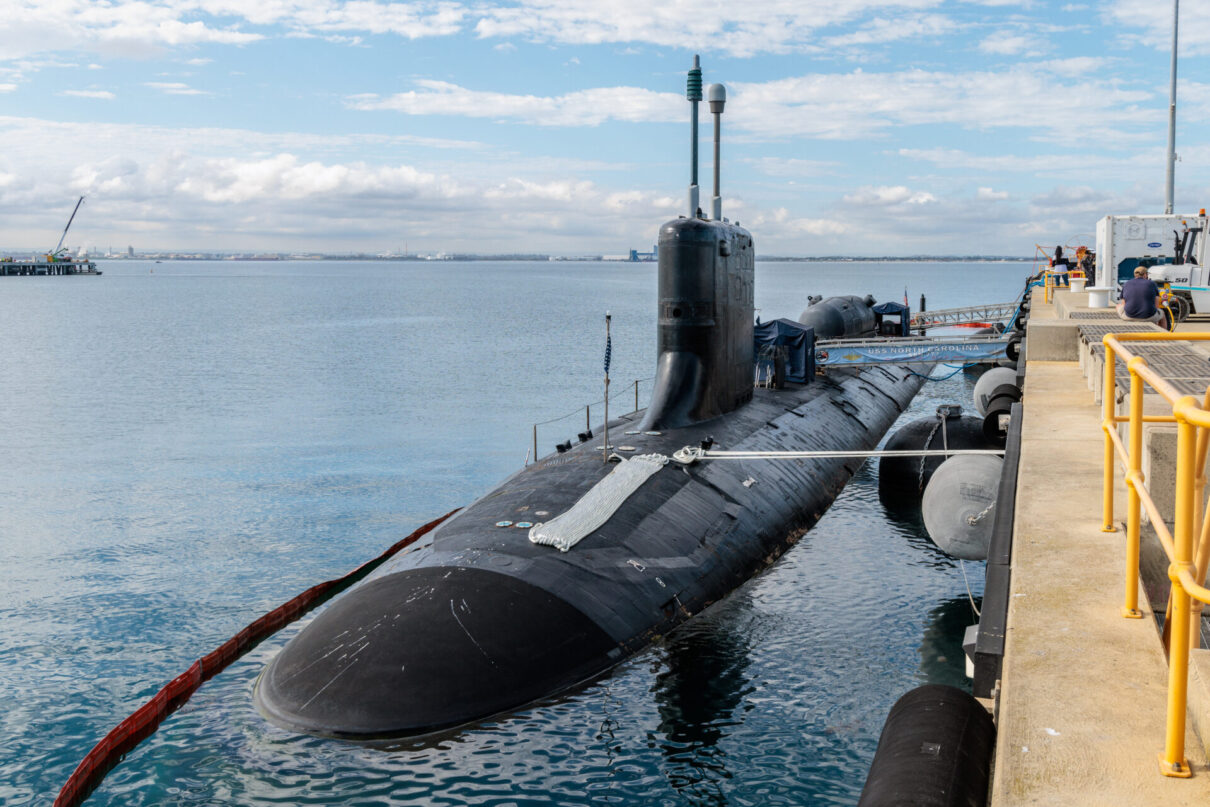Three years on, there is still no compelling argument, strategic or otherwise, for Australia’s acquiring eight Virginia class nuclear-propelled submarines (SSNs).
Nor is there any compelling calculation of the large lick of funding – $368 billion and more – that the program will soak up. Only Defence seems able to command such stupendous outlays when childcare, aged care, Medicare rebates, the National Disability Insurance Scheme, education and social housing fight it out for every cent they can get. The opportunity costs outweigh the value of the opportunity.
The two official documents released so far – one a self-proclaimed “strategic review” and the other a national defence strategy thinner than the paper on which it is printed – are strong on assertion and weak on analysis. They are all we have to justify this extraordinary indulgence in national hubris.
The policy imperative that substantiates Royal Australian Navy (RAN) submarine deployment to the tropic of Cancer, China’s front door, is unknown. The force structure consequences of this unconstrained ambition are unevaluated. The implications for naval capability and the associated personnel requirements await assessment. The industrial and technological demands on the manufacturing sector are unstated, unplanned and unfunded. AUKUS is the triumph of ambition over achievability.
Many experienced political and military commentators have identified the “Emperor’s Clothes” syndrome infecting both sides of the Australian political divide. Bipartisanship, where the path of least resistance and the lowest common denominator converge, is trotted out as justifying self-indulgence and stupidity.
Meanwhile, AUKUS barrackers dismiss former Prime Ministers, Foreign Ministers, military leaders, senior officials, academic specialists, unionists and corporate leaders, “concerned citizens” and voters (who continue to matter for so long as we live in a democracy) as out of date participants in a “reptilian pile-on”. When the Chief of Navy dismisses those who question the AUKUS deal as hijackers “with other specific agendas”, the sectarian nature of what should be a critical national conversation becomes clear. The charge is as unworthy as it is overtly political.
Ultimately, however, AUKUS will not be defeated by its lack of any plausible policy foundation, its unsupported intelligence pronouncements (“we now need to deal with the most dangerous strategic circumstances since WW2”), its stab-in-the-dark funding estimates or the absence of any articulated capability or implementation plan, important though these aspects are.
It will be defeated by its unachievability, as much in the UK and the US as in Australia.
No matter how much Virginia-class enthusiasts dream of castles in Spain (perhaps sunken cathedrals were the Barracuda option to have remained viable) or Australian SSNs waiting to pounce on Chinese warships, RAN nuclear-propelled submarines will remain just that – dreams. For the fact is this: Australia, the UK and the US are competing for a declining workforce incapable of meeting the current needs of the UK and the US, far less of delivering a new platform for Australia.
The Royal Navy’s Astute program is running decades late, and a follow-on submarine remains a pipe dream – literally. And for the US Navy effectively to double its submarine production tempo to meets its own force development plans, not to mention the queue of SSNs either idle or awaiting depot maintenance is, in the world of mixed metaphors, a bridge too far.
In July 2024, the US Congressional Research Service issued a study on the AUKUS project. It is a fascinating and sobering document offering plausible cautions against implausible AUKUS assumptions. At the end of 2023, the US had 48 SSNs in service, of which 21 were Virginia class, against an SSN force target of 66 operational vessels. At the same time, 16 boats, approximately one third of the SSN force, were awaiting depot maintenance.
Consequently, of the target SSN force size, the USN has an effective shortfall of 18 Virginia class boats. This shortfall, due to a combination of factors including insufficient worker numbers, facility constraints in shipyards and supply chain issues, will not be met until 2054. This far-off target force level does not include provision for the three to five (!) boats allocated to Australia, and none for the boats that are to fill a complement of eight. It is difficult, moreover, to see how the UK will meet its own submarine replacement needs in that time frame, given the four decades it has already taken to deliver seven out of eight Astute class boats, with five out of those seven currently alongside awaiting maintenance.
British and American armed services are also competing for a bigger slice of the national budgetary pie, as is the Australian Defence Force. Whether a $20 billion or so per annum expansion of the Australian Defence budget could withstand a detailed analysis of the opportunity costs of such an increase is moot.
The hubris of AUKUS is not without precedent, literary at least. The boast of Ozymandias – “Look on my works, ye Mighty, and despair!” – provides the current and future Australian governments with a salutary warning. Unfulfilled admonition was all that remained of the pretension that underpinned unachievable ambition. China is doubtless quaking in its boots. Shelley captures the despair of impotence: Australia must take care lest, “round the decay of that colossal wreck, boundless and bare, the lone and level sands stretch far away”.
Between the Lines Newsletter
The biggest stories and the best analysis from the team at the Australia Institute, delivered to your inbox every fortnight.
You might also like
Australia has power, why don’t we act like it? | Allan Behm
In a world of uncertainty, it is more important than ever for Australia to stop dismissing ourselves as a ‘middle power’ and start exerting our influence on the global stage.
Australia doesn’t need AUKUS
By reviewing the deal, Trump has given the Australian Government an opportunity to get out of the disastrous AUKUS agreement.
You know what’s more idiotic than a photo op? Walking blindly into the AUKUS pact
There was a lot of hysteria over the symbolism of former premier Daniel Andrews’ photo op with assorted dictators at a Chinese WWII military ceremony, but precious little discussion or analysis of the so-called threats to Australia’s security.



